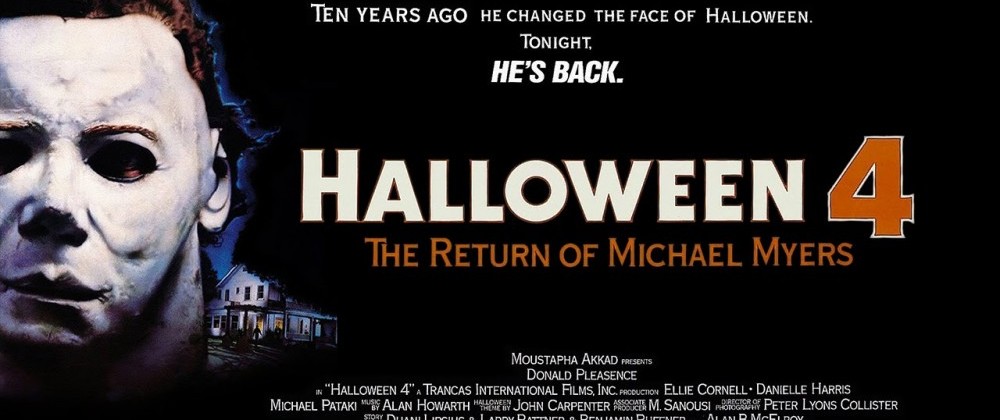The 1980 film Maniac is one I have heard of many times and have always neglected to watch, relegating the film to the dreaded queue of oblivion.
The psychological slasher film, a subgenre of a subgenre, is a rare bird, but something always drew me away from it. Maybe it was the artwork of a knife-wielding man standing over a pool of blood that made me group it in with other paint-by-the-number 80s slashers. Something it wasn’t, however, was accessibility. That’s because I own about two or three different copies of the film, with it often included in compilation boxsets I’d buy. Ironically, I ended up watching it on the Shudder subscription service.
Maniac was directed by William Lustig and written by C. A. Rosenberg and Joe Spinell. Director Lustig has since went onto direct the Maniac Cop trilogy, which is fun to think about. I have never watched any film of the Trilogy, but I am interested and hopeful I will do that someday soon. Prior to, Lustig directed pornographic films, which will explain some of the moustaches that make it into this film.
Since release, the opinion of the Maniac film has evolved and changed. Early on, critics and general audiences considered it an exploitation film and offered it a polarized reception. Things have changed, with Maniac establishing a cult-following and a genuine appreciation. Of course, the phrase “exploitation” is mostly a vague throwaway term meant as a label blanketed over certain subject-matter, similar to when every gory horror film was called “torture porn”.
Maniac was shot with a small budget, often resorting to a guerrilla style approach. That in mind, I consider the production of Maniac to be solid enough, with flickers of real visual inspiration. The times it looks grainier or rougher, they came off like stylistic decisions more than limitation.
Maniac has a straightforward premise – Joe Spinell portrays Frank Zito, an Italian-American serial killer in New York who murders and scalps young women.
As you would expect, there’s a laundry list of neuroses for our protagonist. Frank has one or more personalities than recommended (one’s usually the recommended amount), has a deep-rooted misogyny, and, of course, has the compulsion to stalk and kill people.
The portrayal is a mixed-bag, in my opinion. Some really like it and stand by it. I like certain aspects of it and I can tell the actor was committed to said portrayal. That in mind, his psycho-babbling monologues can sometimes feel one-dimensional, even cartoonish or supervillainy representation of a serial killer. In the eighties, such mannerisms and tropes of a “maniac” weren’t as common, but, even then, some had been played out. To me, Frank’s best moments in the film are when it accentuates a quiet, simple weirdness about him. Frank muttering to himself and growling, or when he is watching on in the background, stalking his prey. That’s when the character is most effective.
It sometimes feels like the film is at war with itself about what it wants. Sometimes when the character is riffing, it can feel like a B-movie style slasher film, and, in other instances, it can feel like an attempt at a character-study, or a psychological film. It’s an imperfect marriage of themes, but an interesting experimentation in itself. It may not have the subtleties, nuances, or discipline needed to stick a landing in the latter direction, but I appreciate the attempt and the times it works. Six years later (in the year of The Fly), moviegoers received Henry: Portrait of a Serial Killer, which I think betters the balancing act. Consider it a walk so others can run scenario.
As mentioned, Maniac had a small budget and was limited. One thing it did have was Tom Savini (about every horror film from the 80s) serving as the film’s make-up artist. Savini, in-general, does very good work, but I will admit his participation is in tonal dissonance with some aspects of the film. That said, I am definitely grateful for his involvement, nonetheless. The scene I enjoyed most in this film is also one of the most off-putting of them. The killer leaps onto the hood of a car and fires a shotgun at one of his victims, creating bloodshed of explosive proportion. It is a scene that plays more as a B-movie for its gratuity, but I still really dug it.
Interestingly, in compliments to what I said about their guerilla approach, Savini used live ammunition for the scene. After firing, he had a getaway vehicle waiting to leave with the firearm for if any police arrived.
The flick clocks out at around the 88 minute mark. It does have the occasional lull to it, or instances where it feels like they could have tightened it from a narrative standpoint (again, I understand budgetary constraints). The characters, other than Frank, are stock, and there is not a lot of forward momentum to the film. It mostly feels like a “slice of life” for our main-character. No character made for us to root for, and no policemen on his tail. None of this is essential, of course, but what we have is a story that feels a little flimsier than ideal. That said, however, I enjoyed myself overall. It won’t sit on the upper echelon for films of its kind, but its influence and merit shouldn’t be overlooked. It’s a decent film with a solid lead performance, and I would recommend it.





